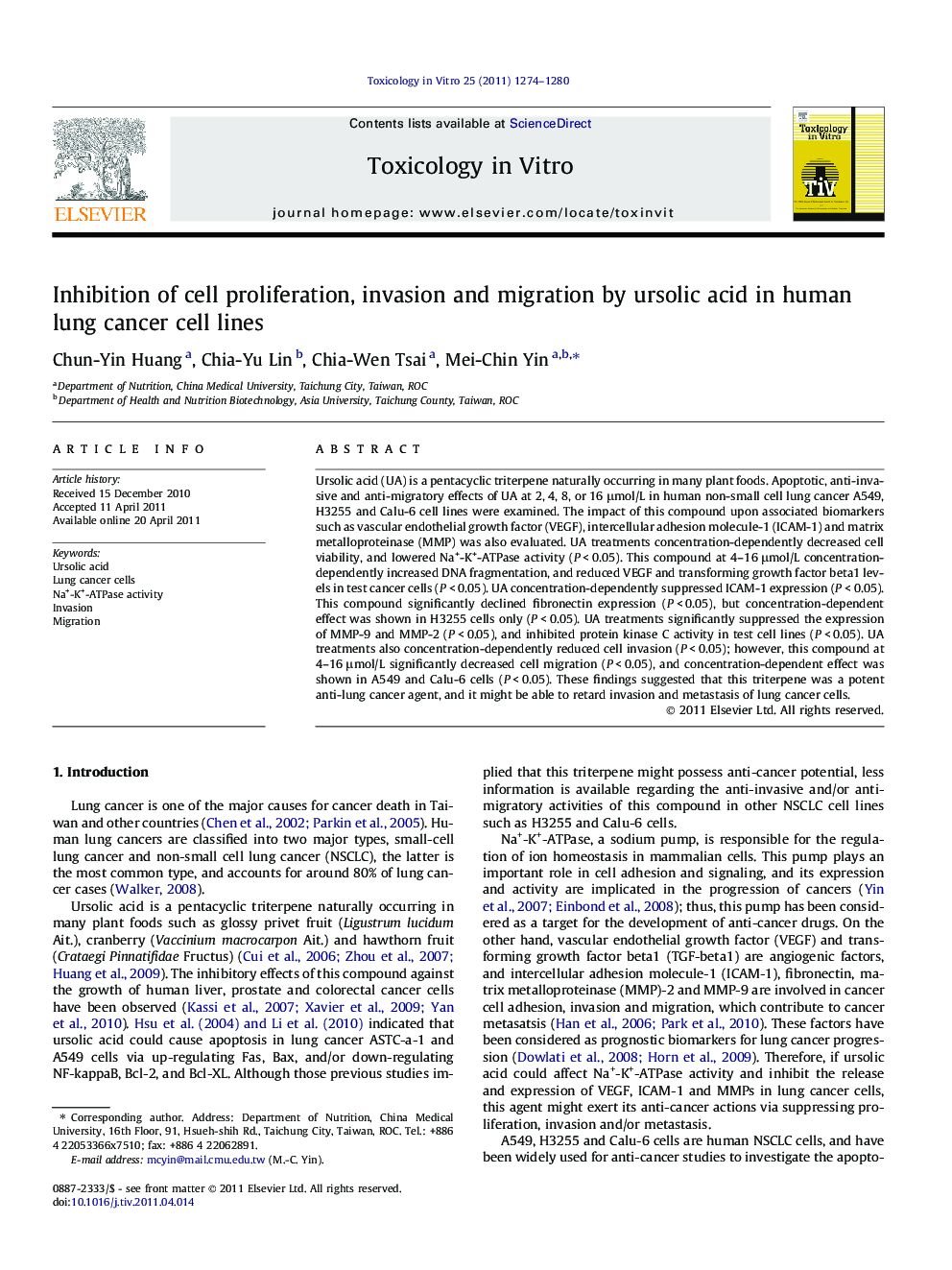| Article ID | Journal | Published Year | Pages | File Type |
|---|---|---|---|---|
| 5862917 | Toxicology in Vitro | 2011 | 7 Pages |
Ursolic acid (UA) is a pentacyclic triterpene naturally occurring in many plant foods. Apoptotic, anti-invasive and anti-migratory effects of UA at 2, 4, 8, or 16 μmol/L in human non-small cell lung cancer A549, H3255 and Calu-6 cell lines were examined. The impact of this compound upon associated biomarkers such as vascular endothelial growth factor (VEGF), intercellular adhesion molecule-1 (ICAM-1) and matrix metalloproteinase (MMP) was also evaluated. UA treatments concentration-dependently decreased cell viability, and lowered Na+-K+-ATPase activity (P < 0.05). This compound at 4-16 μmol/L concentration-dependently increased DNA fragmentation, and reduced VEGF and transforming growth factor beta1 levels in test cancer cells (P < 0.05). UA concentration-dependently suppressed ICAM-1 expression (P < 0.05). This compound significantly declined fibronectin expression (P < 0.05), but concentration-dependent effect was shown in H3255 cells only (P < 0.05). UA treatments significantly suppressed the expression of MMP-9 and MMP-2 (P < 0.05), and inhibited protein kinase C activity in test cell lines (P < 0.05). UA treatments also concentration-dependently reduced cell invasion (P < 0.05); however, this compound at 4-16 μmol/L significantly decreased cell migration (P < 0.05), and concentration-dependent effect was shown in A549 and Calu-6 cells (P < 0.05). These findings suggested that this triterpene was a potent anti-lung cancer agent, and it might be able to retard invasion and metastasis of lung cancer cells.
⺠Anti-cancer effects of ursolic acid (UA) in human non-small cell lung cancer A549, H3255 and Calu-6 cell lines were examined. ⺠UA treatments decreased vascular endothelial growth factor and transforming growth factor beta1 levels in test cancer cells. ⺠UA also suppressed expression of intercellular adhesion molecule-1 and matrix metalloproteinases. ⺠This agent effectively reduced invasion and migration in test lung cancer cell lines.
